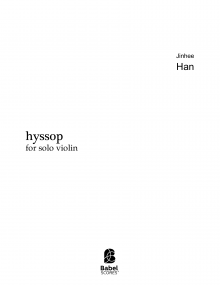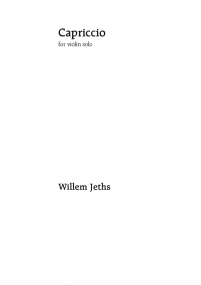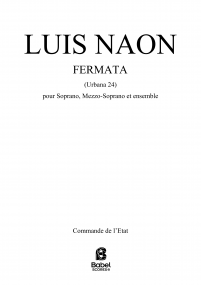Recherche avancée
Rugosa Rose
7,21 €
Version numérique (+0,00 €) à télécharger
Version papier (+14,80 € impression et livraison ). Colissimo7-14 days aprox.
Chez BabelScores, quand vous achetez une partition, vous pouvez ensuite contacter directement le compositeur ici même !
Caractéristiques
Region
North America (Canada - USA)
Estimated Duration
11 - 15min
Date
2001
ISMN : 979-0-2325-0222-9
In Stock
Notes sur cette pièce Natives of Japan, Korea, Northern China and Siberia, the variety of wild rose called "rugosa" tolerated cold, maritime conditions. This makes them ideal candidates for seaside plantings, where they will grow happily in sand, and are impervious to salt spray. These old roses from Asia don't care where they grow nor whether they are tended (they are grown as crash barriers on European motorways). They are the healthiest of all roses.
They bloom profusely, set their great hips, then bloom again and again. It is quite normal for a Rugosa to bloom for eight months of the year, carrying hips and flowers as it goes. Nearly all rugosas produce massive displays of hips, some oval, some round, from small berries to golf balls. Blooms range from white through pink to reds and even yellow. The original species plants had but five petals, but later breeding in the eighteenth and nineteenth centuries gave us more double, many-petalled forms.
Their value is threefold - for their foliage, their flower and their fruit.
(Paraphrased from a text by Lloyd Chapman)
The concept behind Rugosa Rose is to create a compositional construction from which no two performances will be identical. In accomplishing this I have asked the soloist to make a large number of decisions in the course of performing, as well as asking that s/he reconstruct the order of the piece (from start to finish) for each performance. The latter is done utilizing a process involving the performer's date of birth, the date of the performance, the performer's time of birth and the approximate time of performance. Out of this I hope to achieve an interesting variety of outcomes and also to give each soloist a piece that can be uniquely her/his own.
odd: choose a, c or e
even: choose b, d or f
Ajouter à une playlist
- Identifiez-vous pour créer une liste
They bloom profusely, set their great hips, then bloom again and again. It is quite normal for a Rugosa to bloom for eight months of the year, carrying hips and flowers as it goes. Nearly all rugosas produce massive displays of hips, some oval, some round, from small berries to golf balls. Blooms range from white through pink to reds and even yellow. The original species plants had but five petals, but later breeding in the eighteenth and nineteenth centuries gave us more double, many-petalled forms.
Their value is threefold - for their foliage, their flower and their fruit.
(Paraphrased from a text by Lloyd Chapman)
The concept behind Rugosa Rose is to create a compositional construction from which no two performances will be identical. In accomplishing this I have asked the soloist to make a large number of decisions in the course of performing, as well as asking that s/he reconstruct the order of the piece (from start to finish) for each performance. The latter is done utilizing a process involving the performer's date of birth, the date of the performance, the performer's time of birth and the approximate time of performance. Out of this I hope to achieve an interesting variety of outcomes and also to give each soloist a piece that can be uniquely her/his own.
odd: choose a, c or e
even: choose b, d or f
Instrumentation
Violin
Recording
Violin- Mark Menzies
Score Details
Format - A4 / US Letter
Pages - 17
Pages - 17













